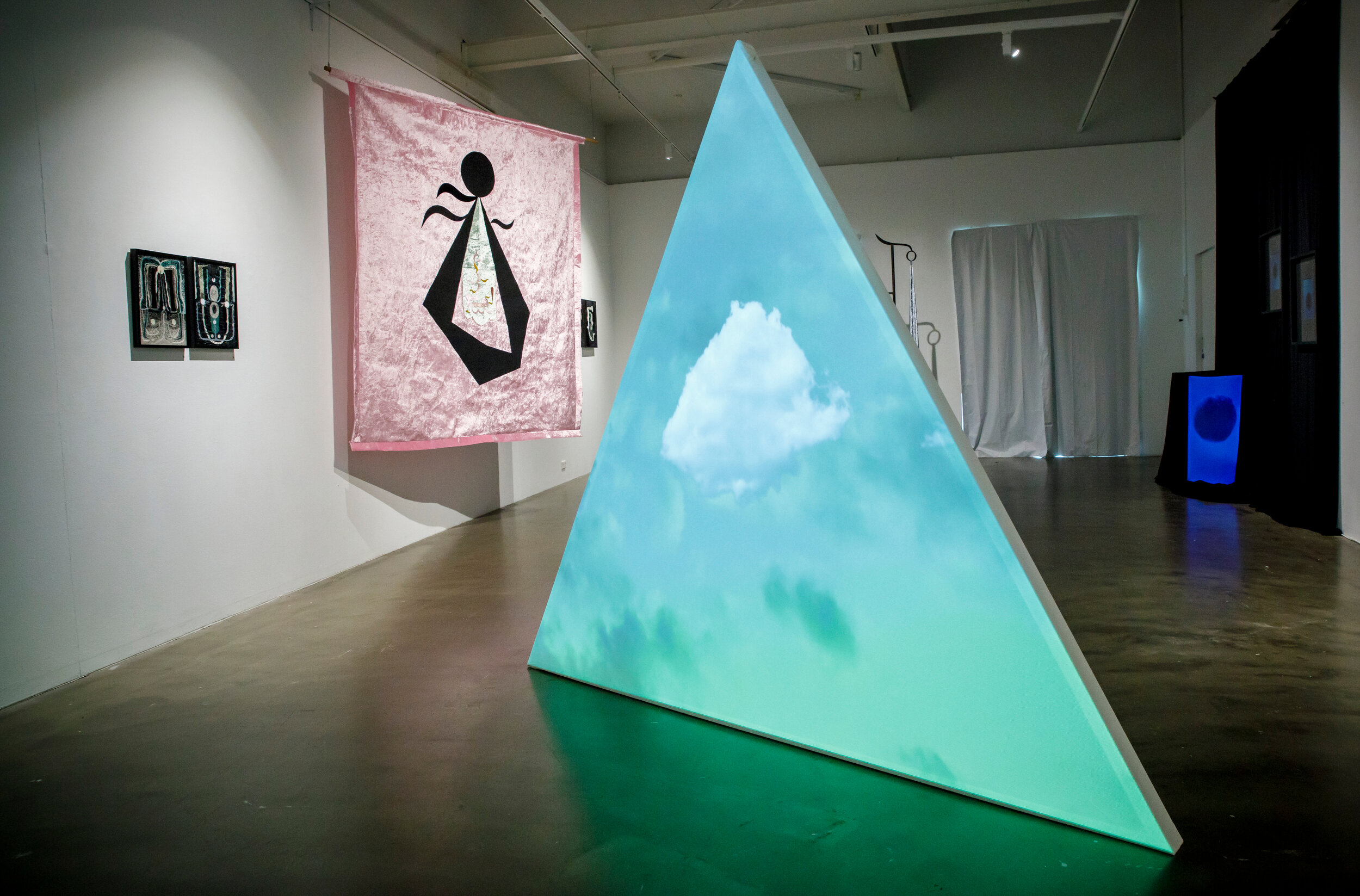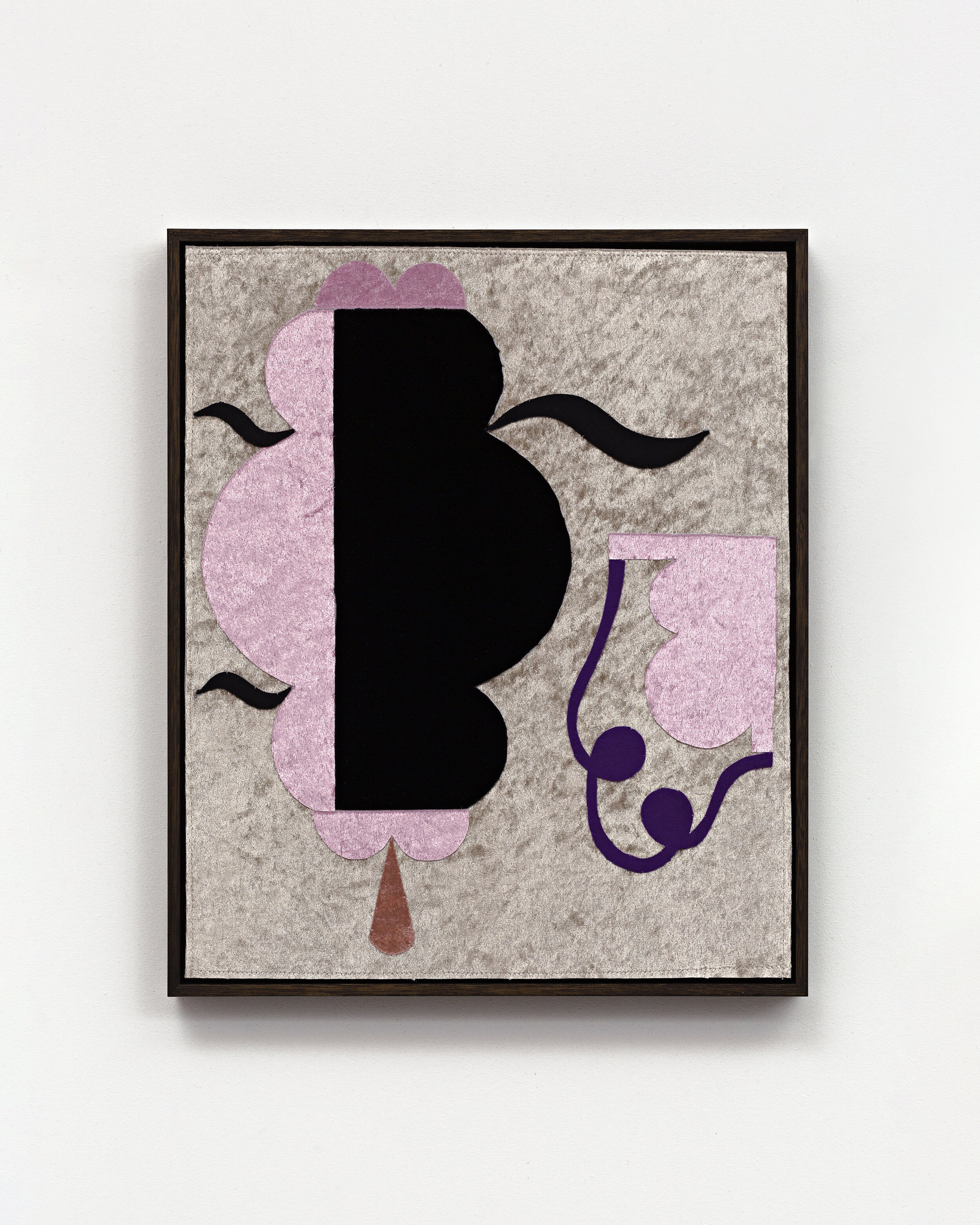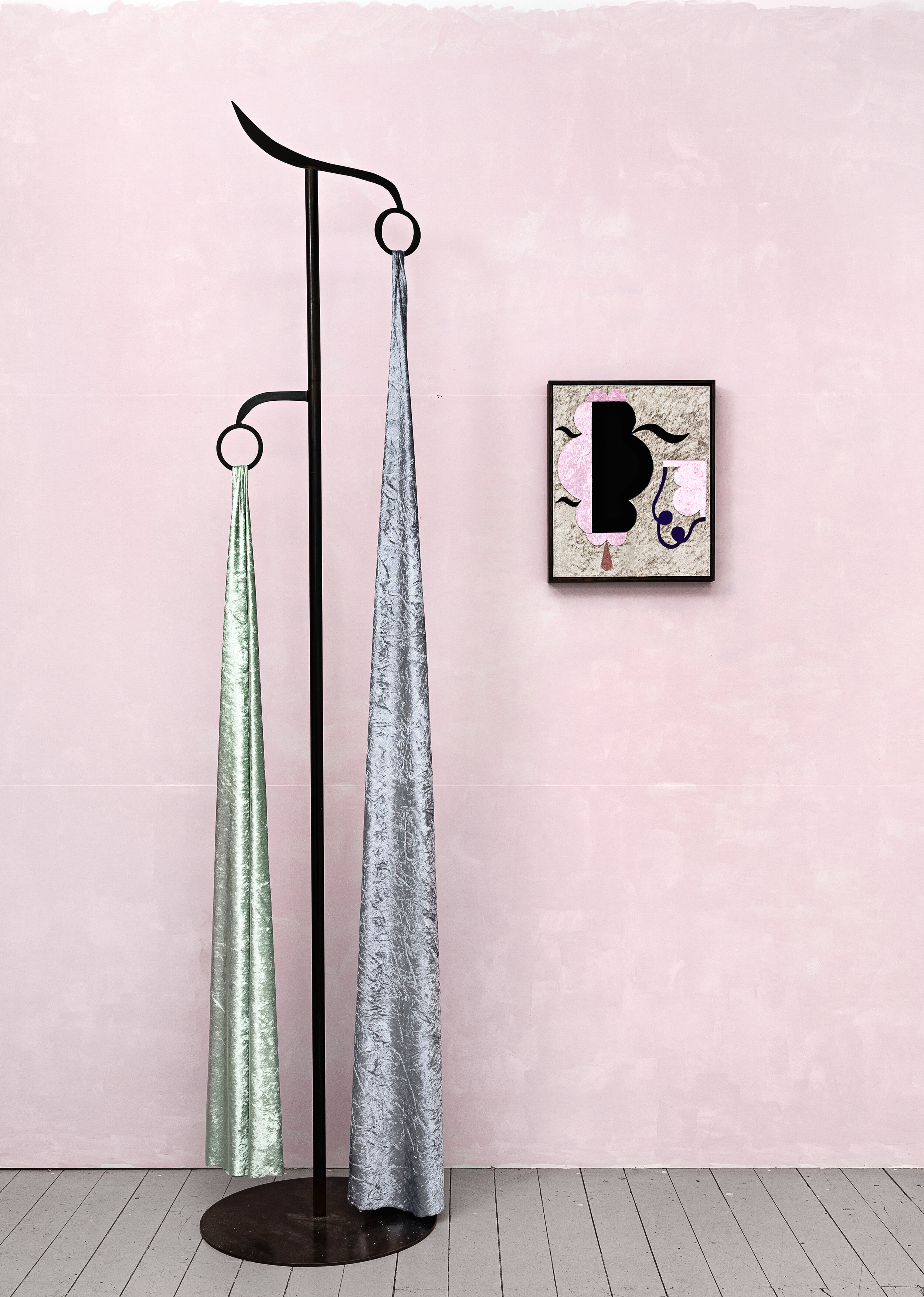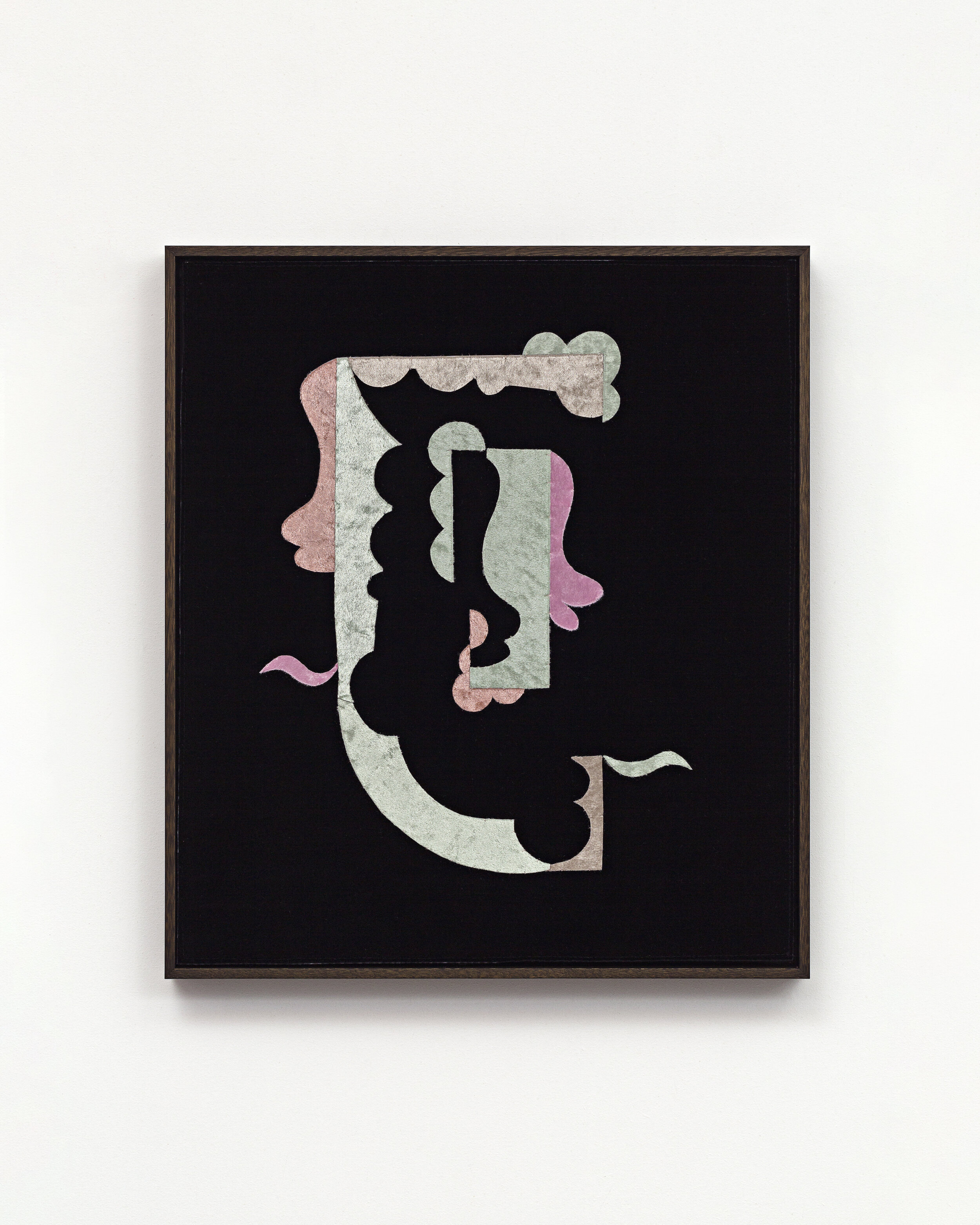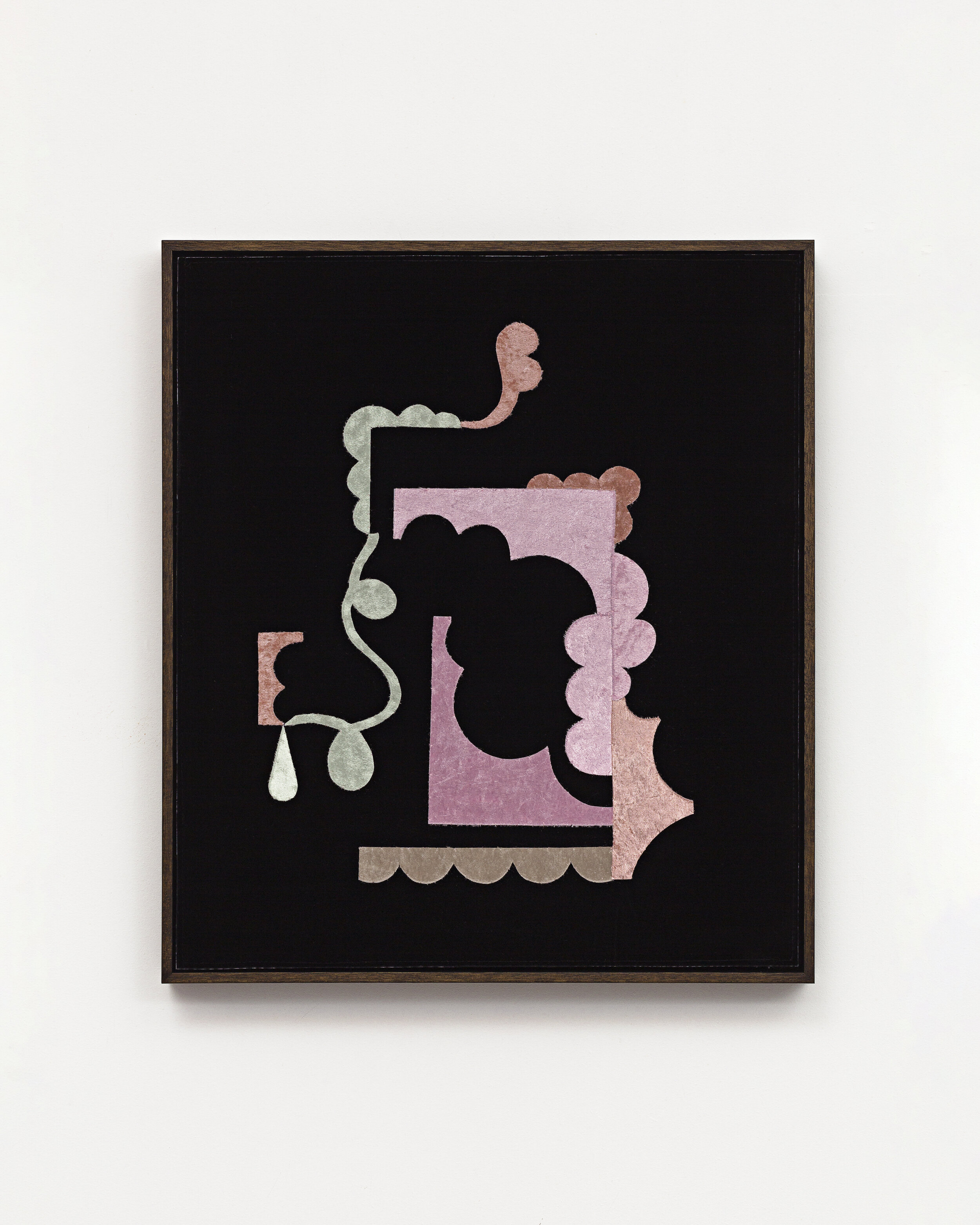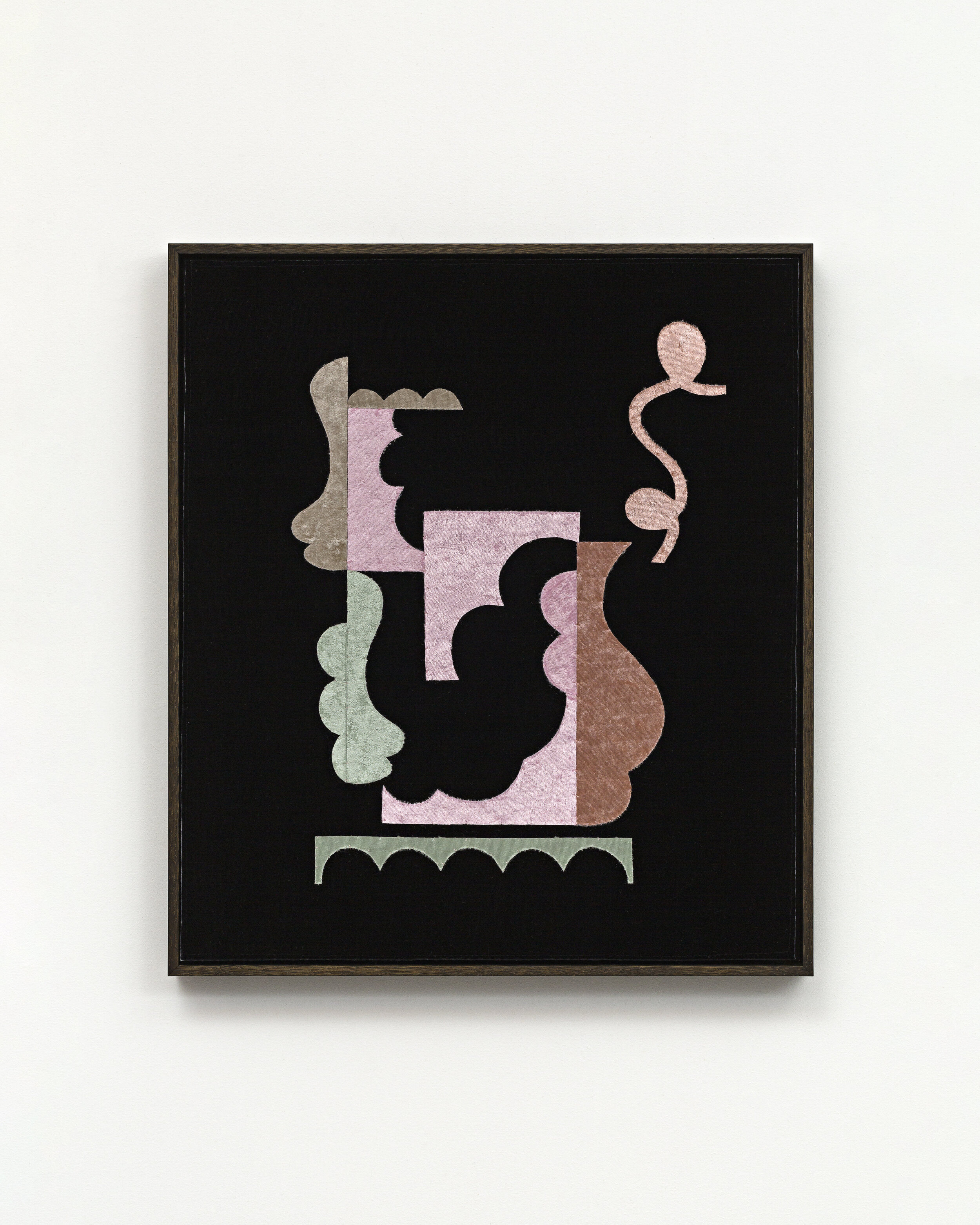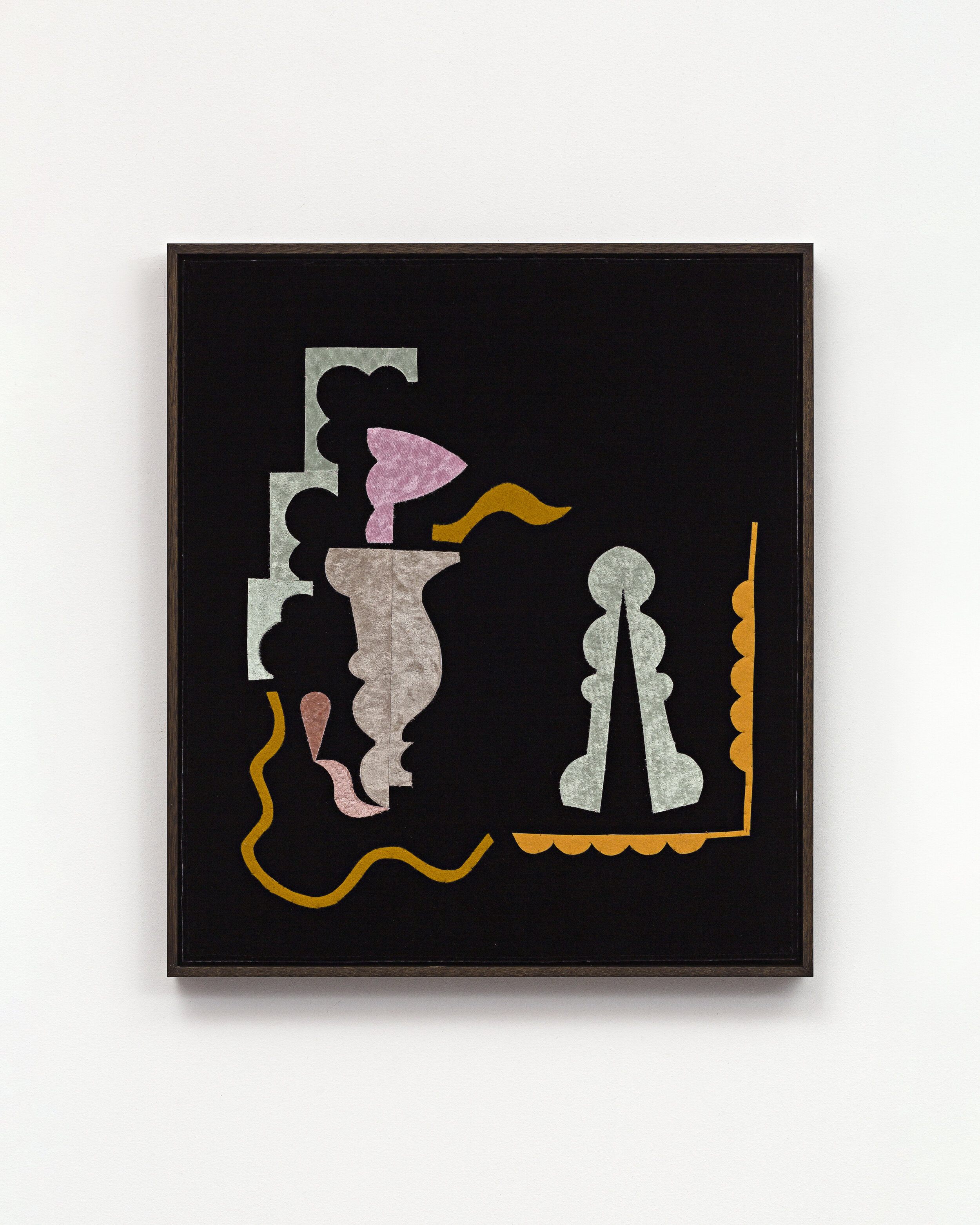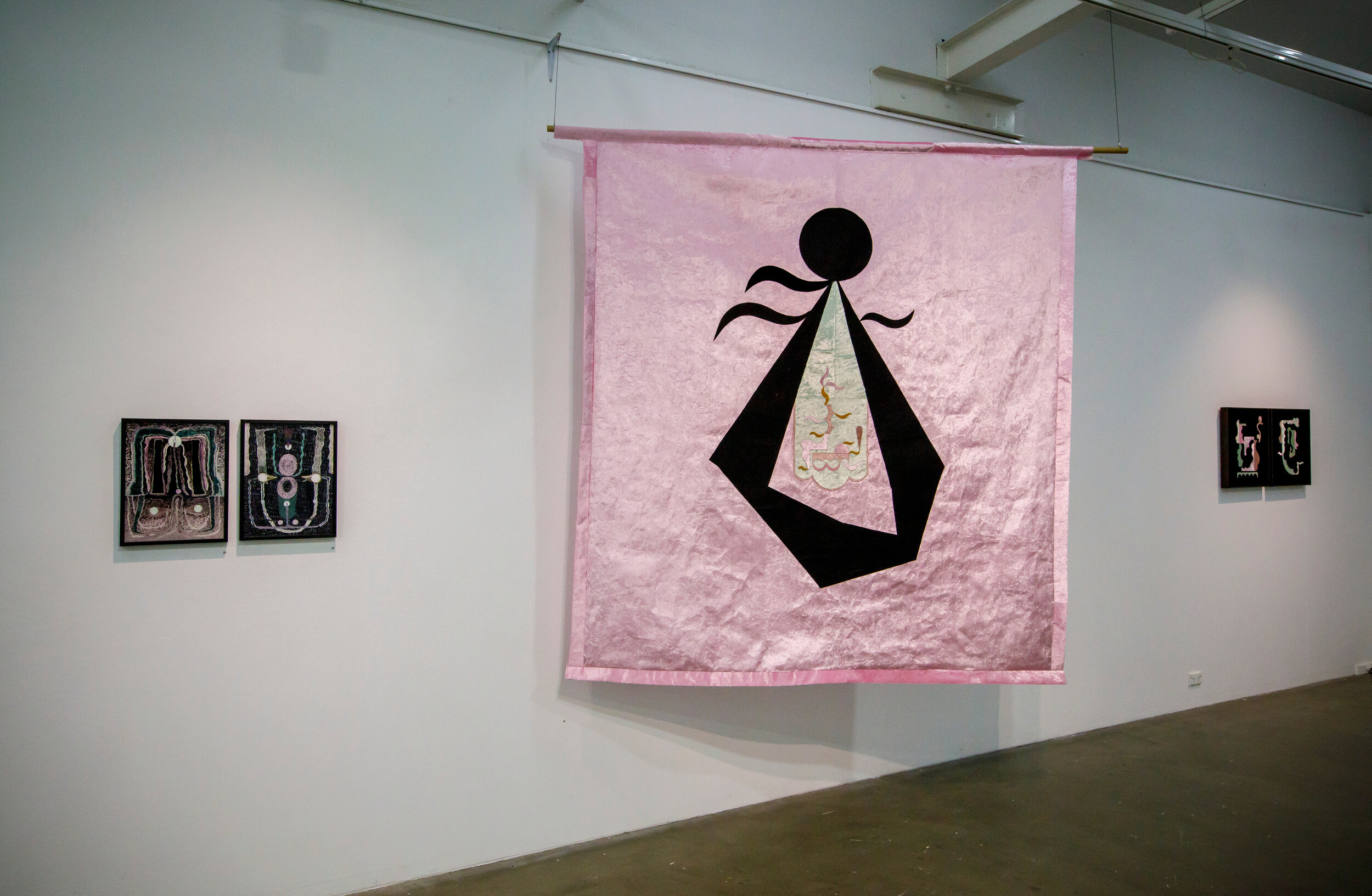SUPERNATURAL LIGHT AFFINITY 2020
ANCA, Canberra.
Curated by Ali Noble.
Helen Shelley, Ali Noble, Lisa Sammut and Yvette Hamilton
Leaning In To The Unknown
The four artists in Supernatural Light Affinity, Helen Shelley, Ali Noble, Lisa Sammut and Yvette Hamilton ask us to see beauty, seek beauty, and sense beauty. Not from a position of knowing, but rather, by not knowing. They share the desire to harness a sense of the unintelligible and supernatural, through works that consider light, reflectivity, and beauty. A little wary of the word, I ask the artists ‘what is beauty to you?’, before I set about writing this piece. Fortunately, I was met with a collective pause. A still and thoughtful moment to consider the somewhat loaded question posed to them.
Beauty has had a rough ride in modern aesthetics, since the sublime sidelined it, popism replicated it, and contemporary art has all but deaccessioned it. This is partly an inevitable result of feminist contention on the values around beauty in art and the male gaze, as well as a drive towards political and social themes in art making. I fear that perhaps I too have become beauty blind. Or rather, I resist the word in art as it seems too easily exclusive as either the handmaiden of privilege or material greed. As I write this, I find myself grateful for the opportunity to examine this aversion with artworks that shimmer, reflect, transcend and perform acts of, dare I say it, beauty.
‘It’s not about symmetry’ Noble offers, ‘or about homogenous beauty of form’. In her seminal text, On Beauty and Being Just, Elaine Scarry attempts to restore beauty to its proper philosophical intentions, in an act that she describes as unselfing, orradical decentring. In her essay, Scarry pays homage to the mid-century French philosopher and mystic, Simone Weil: ‘At the moment we see something beautiful, we undergo a radical decentring’. Beauty, according to Weil, requires us ‘to give up our imaginary position as the centre . . . A transformation then takes place at the very roots of our sensibility’ [1] I think about this state of rapture, if you like, that moves us, the ‘I’ to the sidelines when we are in the presence of something beautiful, and the sense of contentment we feel at being there. Scarry believes that it is here we can do justice in the world, in this decentred space beauty has created for us, as ‘we willingly cede our ground to the thing that stands before us.’[2]
Resistance, justice, beauty.
But what if beauty is the unknown? When the state of rapture is precisely that moment in undetermined waters - that space where we lose our footing, our centre. Beauty can be received by all the senses, but what is interesting about the visual is that visual thinking encourages a sense of separation between us, the perceiver, and the thing that is being perceived, accentuating our place on the sideline. This divide is complicated further if you throw in a trick or two. Supernatural Light Affinity stages a scene where not all is what it seems. The works explore the unconscious to deep space, where, according to the artist statement ‘not knowing is an enchanted terrain’. Light shimmers, minds flicker with the games the artists play on us - the tricks of conspiring forces.
Shimmer, flicker, shift.
Velveteen, a throwback to the 70s psychedelic, rarely finds its place in high art. Its tackiness epitomised in the 1970s Black Velvet Art movement, in the forms of Jesus, matadors, panthers, and of course, Elvis. In his book on the topic, Erik Eliason suggests that actually velvet paintings play an important role in Western culture as ‘the anti-art, a fixed concept that people distance themselves from to prove they have good taste’. A material made to imitate, its shine is not as even as it’s richer cousin, velvet, but it is precisely this notion of the underdog that Noble likes to offer up as a homage to the underdog. While complicating our perceptions of value and the white cube.
‘Velveteen is kind of tacky, but I like to think it can also be beautiful Noble explains ‘a very humanistic belief that no thing, or person, is just one quality alone.’
The assemblages are made dynamic by the velveteen and the light that happens upon them, dancing together they play optical tricks, asserting themselves with sensuality. Like queer talismans of good fortune, the dyadic alternations between light and colour, shape and material make the objects glimmer and move. Noble’s assemblages offer us a phenomenological moment to interrogate the ongoing legacies of the feminine re-imagined, while acknowledging the multifaceted creativity of women’s work.
Shift, void, truth.
Where light is omnipresent in Nobles work, Hamilton asks us to consider art, or rather life, without it. Her Dark Star – Dark Matter works are inspired by the black hole image of 2019 revealed by the Event Horizon telescope. What is seen when there is no light? Is an image even an image in the complete absence of light? Hamilton is fascinated by the notion of photographing the unphotographable. The black hole is a region of spacetime where gravity is so strong that nothing - no particles or even electromagnetic radiation such as light - can escape from it. The human mind’s limited capacity to comprehend this nothingness, is matched only by its futile but persistent attempts at showing the world what it looks like.
Dark Star are shapeshifters, teasing us with clues as they come closer and then retreat out of focus. But where the use of high-tech software was used to create the Event Horizon ‘photograph’ of the black hole, Hamilton uses lo-fi materials from her photographic studio, props that echo the absurdity of our impulse to control and arrange scientific information and phenomena. Cinefoil, studio lights, and the basic colour spectrum used in photographic processing, are not the only characters in this performance, however. The artist’s hand is at work here, as she plays the protagonist arranging and shifting stories, truths and the void.
It is with Scarry’s optimism on beauty and justice, I can only assume that creations made by the artists on behalf of beauty are also an attempt at reckoning with an era that is distinguished by separation from the natural world. And that art reminds us that the benign impulse towards creation results not only in resolve but in everyday acts of wonder. The wonder here is the unknown. In Scarry’s words, ‘People seem to wish there to be beauty even when their own self-interest is not served by it; otherwise, it is inexplicable why people get upset about the disappearance of kelp forests they had never even heard of until the moment they were informed of the loss;’[3]
Truth, meaning, move.
Radial Sign, stands at the centre of the exhibition. The stretched projection can be viewed from both sides of the large triangle screen. It is like an all-seeing eye – a portal into another realm. Created by Lisa Sammut, the work is inspired by the idea that the only way to deal with the intangible and illusive is to substitute it with something handheld and graspable. Clouds drift in awkward and sometimes haphazard directions, as the artist alters their positions against the blue sky, shifting them like puzzle pieces. The elements are in dialogue, the sky, the clouds, the artist. The tricks of conspiring forces. Sammut’s work points to the medieval illustrations in the Augsburg Book of Miracles. The book presents historical evidence of the human desire to understand and explain the cosmic through the creation of speculative visual material. Examples include depictions of comets and meteor showers as swords or even flying reptiles.[4] These ideas may seem comical and naïve to us now, but we are reminded that our present is only fleeting and our modern ‘science’ new. It is this very human centred view of all existence that Sammut interrogates with her work Radial Sign. The beauty is here, in the attempt to understand. To comprehend the unknown with gesture and imitation.
I think again about Scarry’s passionate defence of beauty. Specifically, that the demotion of beauty has unfairly come about as a result of its juxtaposition with the sublime. Emanual Kant and Edmond Burk created this subdivision between the aesthetics of the sublime and beauty, where, according to Scarry there needn’t have been one. Formerly capable of charming or astonishing, ‘now beauty was the not-astonishing; as it was also the not-male, the not-mountainous, the not-righteous, the not-night. Each attribute or illustration of the beautiful became one member of an oppositional pair’.[5] If we are to return again to the centre as a position from which humans must shift in order to make space for change, then I find myself more compelled to use and acknowledge beauty’s role in this urgent task. Four women artists assemble elements of human and non-human experience as gestures towards optimism and creativity.
Helen Shelley’s abstract paintings reach outwards in fast galactical spattering’s of shape and light. Like much of her recent work, they are inspired by a transcendent vision experienced after the death of her father. The works, although inspired by a personal experience, are universal, and contain celestial and earthly ideas. The titles take us there, The Earth’s Crust, The Baby’s Breath and Ode to Trees. Like all works in the show, the viewers role completes the dance of affect. The artists are all too aware of this. For Noble and Shelley without our movement, the light is static – as we move – abstract reflections shimmer and shift. For Hamilton and Sammut, we are the scientist from past and present, looking through the apparatus from which we grapple to understand mysterious events.
Life, birth, death.
Perhaps it is the unknown that has the unique potential to destabilise the centre. If we let it, that is. History has shown that the unknown has propelled us to corruption, greed and fear. But what if we were to submit to it? ‘I know that I know nothing’ were the words of Socrates, for which he was named the wisest of all men. Maybe, a revision of Kant’s list of aesthetic opposites is needed here. It could be the not-homogenous, not-centre, not-knowing where we can find beauty. Or rather is it there that beauty might find us?
Nina Stromqvist
[1] Elaine Scarry, On Beauty and Being Just, The Tanner Lectures on Human Values Delivered at Yale University March 25 and 26, 1998
[2] Ibid, p.77
[3] Ibid, p.81.
[4] The Augsburg Book of Miracles is an illustrated manuscript made in Augsburg in Germany in the 16th century. It was first published in 2013 by Taschen.
[5] Elaine Scarry, On Beauty and Being Just, The Tanner Lectures on Human Values Delivered at Yale University March 25 and 26, 1998, p. 56

